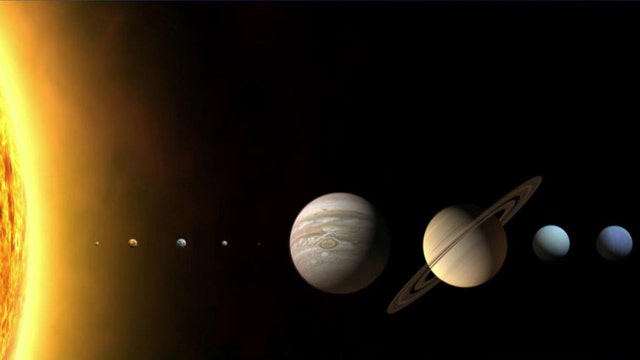Are more planets hiding in our solar system?
Former NASA astronaut Mike Massimino reacts to new theory from astronomers
It was first seen just a month ago. A tiny blip of light was seen to be moving through the sky by the PanSTARRS1 telescope in Hawaii.
The number-crunching which followed was automatic. The results were unusual.
This object is in an odd position. It’s moving very fast. And it’s in what appears to be a somewhat extreme orbit. Extreme enough not to actually be an orbit, in fact.
TOP 25 CITIES FOR UFO SIGHTINGS IN THE US
Observations published by the by the International Astronomical Union’s Minor Planet Center (MPC) suggest it could have come from deep space.
Specifically, it could be a comet that has escaped another star.
“If further observations confirm the unusual nature of this orbit, this object may be the first clear case of an interstellar comet,” the MPC declares.
WHAT IS C/2017 U1?
The PanSTARRS telescope spotted the object only after it was flung back out towards the stars by our Sun.
It’s not likely to ever return. It flashed past Earth at 24 million kilometres on October 14.
Many eyes watched it closely, keen to determine exactly what it was. Their curiosity was piqued by where it had come from.
Most objects orbiting our Sun do so along a common plane: the planets, dwarf planets and asteroids mostly swing around in roughly the same way.
This one appears to have come down on the plane from 122 degrees, from the direction of the star Vega, in the constellation Lyra. And its path did not indicate the curved ellipse typical of clockwork-like returning comets.
Best guesstimates make it a comet of about 160m diameter, with a surface reflectivity (albedo) of about 10 percent.
ARE ALIENS REAL? ALL THE EVIDENCE, SIGHTINGS AND CONSPIRACY THEORIES ABOUT THEIR EXISTENCE
A WANDERER
The object has just been through a close call (in Solar System terms): it came within 38 million km of our star before its momentum and the Sun’s gravity hurled it back outward.
Normally such a close pass would be fatal. But C/2017U1 was travelling too fast for the Sun’s heat to consume it.
It was moving at 26km per second when first observed.
Astronomers are now attempting to refine their observations and data to pinpoint exactly where it came from. If it truly is of interstellar origin, the next task is to find which star it is likely to have come from.
At the moment, it appears to have been somewhere in the direction of the star Vega.
It’s also likely to have been wandering, alone, in deep space for a very, very long time.
Vega is a relatively close neighbour of our Sun at 25 light years distance. At the speed it’s travelling, it would take about 1.7 million years to cross the interstellar divide.
This story originally appeared in news.com.au.
